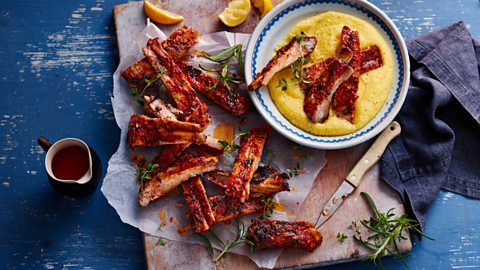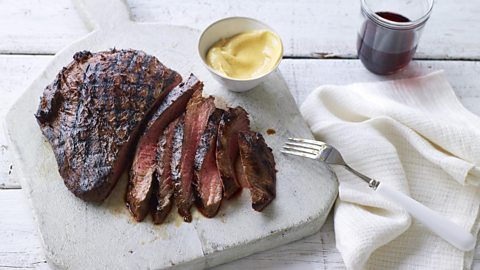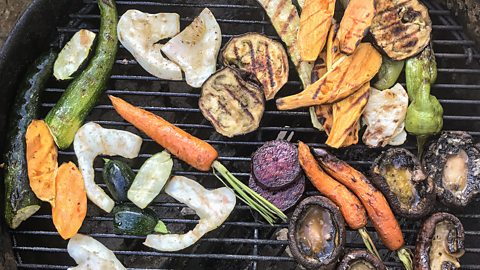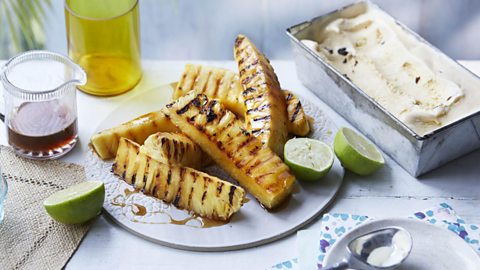How to make barbecuing less work and more fun
If you find yourself worried about overcooking or undercooking food or sending everyone home with food poisoning, this article is for you. These barbecue secrets can help you relax, allowing space during your cook-out to have a chat or get another beer from the fridge.
But if you lovingly tend your barbecue armed with a Dutch oven, temperature probe, plancha plate and fish basket, this article is not for you.

Basics: The heat is on (and off)
To get a good result (and wiggle room in cooking times), set your barbecue up with a direct heat area and a cooler area off the coals тАУ which means putting them to one side rather than in the middle.
If your barbecue has a lid, you can cook with indirect heat тАУ a bit like roasting тАУ and your food is unlikely to scorch as long as the lid is on. A lid is crucial for chicken pieces, large joints of meat, or anything youтАЩd usually bake rather than griddle. Without a lid, youтАЩre basically trying to bake with the oven door open. If you want to barbecue chicken without a lid, bake it in the oven before grilling.
But if you are directly grilling, choose boneless cuts of meat or veg. Alternatively, follow advice from the Food Standards Agency (FSA) to pre-cook meat on the bone (like these gorgeous ribs) in the oven before finishing on the grill. This prevents the charred/raw conundrum.

Your barbecue needs time and space
The distance between coals and food is important, especially if youтАЩre cooking meat that drips fat and causes flare-ups. A little flare-up doesnтАЩt matter if the fire canтАЩt reach the food to leave those bad-tasting sooty deposits. But if itтАЩs too close (disposable barbecues!), you have little option other than to watch your dinner burn.
One last thing about timing: itтАЩs gospel to wait for the coals to be covered in grey ash so theyтАЩre hot enough to cook on. So start your barbecue 15 minutes earlier than you think you should. How many times have you stressed over the food being late, while everyone gets drunk and fills up on crisps, only to find at the end you have the perfect set of coals for cooking?
Meat
The FSA is clear on how to avoid food poisoning from poultry, pork and foods made from minced meat, such as sausages and burgers. Stick to these rules and always check food before serving:
- Check meat is steaming hot throughout
- Check no pink meat is visible
- Check juices run clear in chicken.
Invest in a temperature probe if youтАЩre worried about food poisoning. Our roast calculator contains internal temperatures for joints of meat. ThereтАЩs no need to overcook food to unbearable dryness if you know what youтАЩre aiming for.
Alternatively, cook cuts of meat that can be served rare тАУ steaks (skirt/bavette is good), lamb cutlets, beef, or lamb skewers. Get a browned crust on both sides, then give it 15 minutes or so to rest so the juices settle and the meat relaxes.
If youтАЩre throwing together a last-minute barbecue, a 20-minute marinade at room temperature is enough for quick-cooking cuts. (DonтАЩt let your meat sit out of the fridge any longer than this, though!)
The simplest thing to barbecue is fresh fish. Brushed with oil and seasoned with salt and pepper, it requires little else to taste mind-blowing. Skewer fillets (such as barbecued mackerel) if thatтАЩs what you have.

DonтАЩt feel the burn
WeтАЩre not averse to a little charring, but a completely blackened, flaking burnt sausage (especially one thatтАЩs not cooked inside) is no fun.
Instead, bring a large pan of water to the boil, add your sausages and simmer for 8 minutes, or until cooked. Drain them and theyтАЩre ready to be grilled to perfection with no chance of being raw inside. Not only do they take a lot less time over the precious hot space, they stay juicy and plump. You can also pop them on sticks and brown them over the campfire, cartoon-style.
The more sugar there is in your marinade, the more likely it is to burn. If your attention might wander, go easy on yourself and leave the sugar out. Switch in a final brush for a sweetened sauce such as hoisin, barbecue sauce or even honey, then cook for a final 5 minutes to reach maximum stickiness before taking off the heat.
If possible, focus on cooking one type of meat (or any food) at a time. If you need to constantly lift the lid to turn the sausages, your chicken isnтАЩt cooking. (And if your chicken isnтАЩt cooked, itтАЩs possibly contaminating other foods.)
Vegetarian barbecue ideas
If youтАЩre racking your brains for a veggie option beyond soya sausages, try grilling summer vegetables with a brush of oil, salt and pepper.
Obviously, donтАЩt squeeze vegetarian foods and meat into a limited space on the barbecue. Start the barbecue earlier and cook vegetables first, then let them develop great flavours with a post-grill dressing. Arranged тАЬartfullyтАЭ on a big platter, they will look very тАШgrammable.
Build up a big pile of coals that can be spread over a wide area тАУ vegetables take up a lot of space, and youтАЩll want to cook loads because the meat-eaters will want some too.

Try:
- Baby carrots and leeks cooked whole
- Root veg (sweet potato, celeriac, beetroot) sliced into 1cm тАЬsteaksтАЭ
- Charring spring onions or asparagus тАУ double-skewered if you fear them dropping through the bars
- Sliced summer squash and halved young courgettes
- Large mushrooms stuffed with garlic butter or soft cheese, with the based brushed with oil
- Whole peppers grilled without any oil. You can remove the skin for roasted red peppers or eat the whole thing. Aubergines cooked whole make perfect baba ganoush
- Greens тАУ lettuce, chard and cabbage seem unlikely candidates for a barbecue, but a 5-minute grill will make them the best brassicas youтАЩve ever tasted
- Fruits such as nectarines, peaches and pears taste amazing as part of a salad, or serve grilled pineapple as a delicious dessert.

Cleaning your barbecue
Whatever you read, you cannot get a yearтАЩs (or several yearsтАЩ) worth of burnt-on grease and food off with a sprinkling of bicarb or a spray of vinegar. Scrape everything off the dry, cold barbecue until you begin to see silver and no grill bars look coated. A scraper with notched edges is good for following grill bars and getting into corners.
When youтАЩve removed as much grime as possible, give it a wash in hot, soapy water or use a barbecue degreaser. Scouring a wet barbecue just spreads a fine mist of grease over the kitchen sink and surrounds.
Avoid all this hard work by cleaning as you go, starting each cook by preheating your grill for 10 minutes over hot coals, then cleaning with a scraper or a crumpled piece of foil held between sturdy tongs. Wire brushes work well, but loose wires can stick to the bars and end up in your food. Use very carefully.
A clean, preheated grill helps prevent food from sticking and breaking apart, and helps you rest easy from the judgement of your guests.
